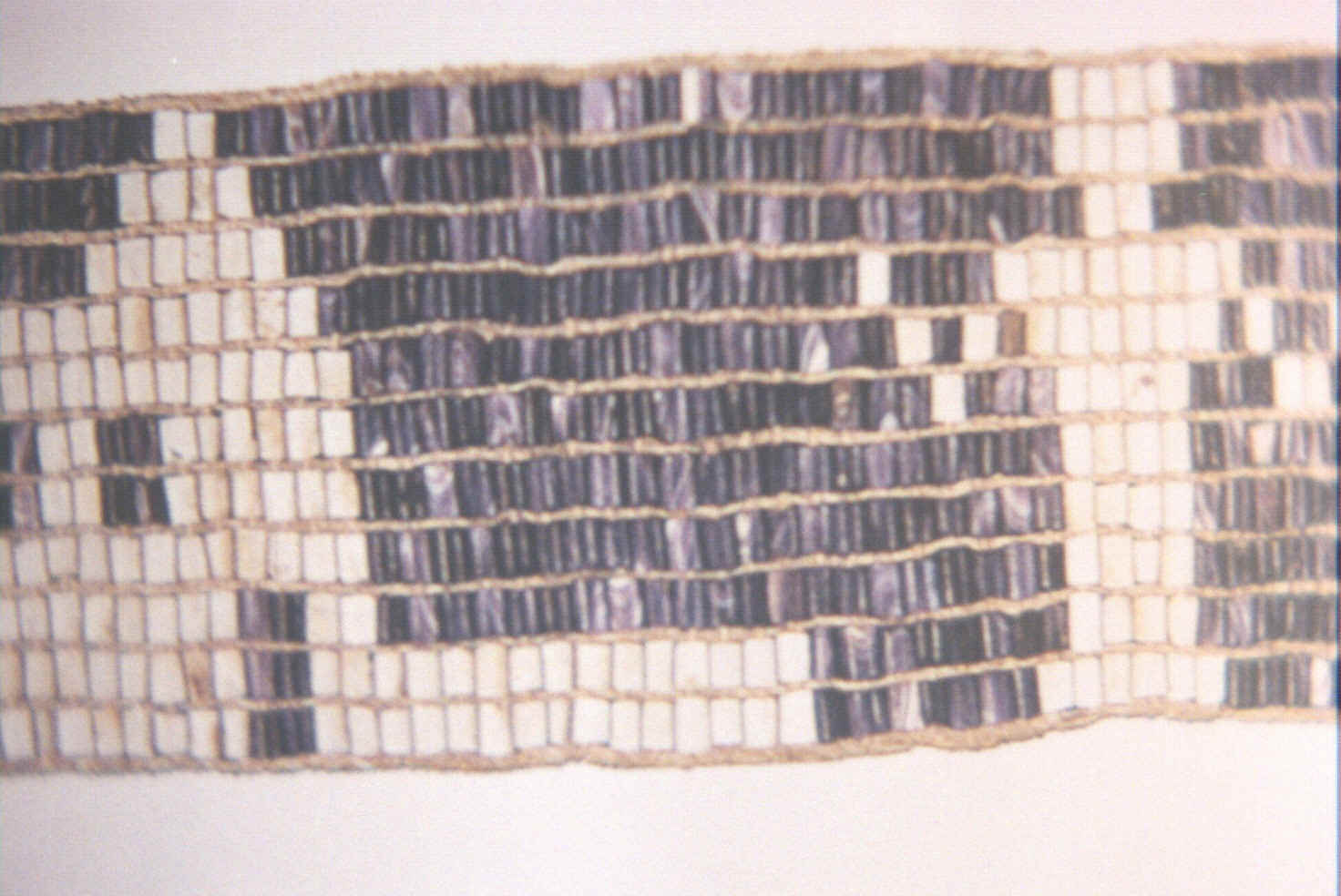 |
 |
This detail of a wampum belt shows an anthropomorph and a house form. Belts like this were used to remind the involved parties of agreements which brought peace and prosperity to the communities of the woodlands.
Today, many important belts are in the collection of Chartres cathedral in France, taken there by Jesuits who came to the Woodlands to Christianize the Algonkians in the 1700 and 1800s.
Many wampum belts were collected by a retired military officer who recognized their worth, he traveled the woodlands in search of them and bought them even though no individual had the right to sell them, as they were owned by the community and held for proper keeping by individuals assigned the duty. He donated the collection to the New York State Museum in Albany. When a fire destroyed half of the Museum in the 1920s the belts were finally returned to the Iroquois since the State could no longer use the argument that they could care for the belts better than the Iroquois.
Sara Prindle contributes this:
 Reproduction
Reproduction of the "Belt Carried by the Penobscot Delegate to Caughnawauga"
Reproduction
Reproduction of the "Belt Carried by the Penobscot Delegate to Caughnawauga"
"The white ground color symbolizes its peaceful mission, the blue rectangle in the center represents the four Wabanaki tribes grouped about their council fire, while the four small crosses ranged at the sides again denote the four tribes. Another somewhat variant interpretation may be given in which the central rectangle represents the council fire of the confederacy at Caughnawaga, to which the four tribes indicated by the crosses owe their allegiance." (Leavitt & Francis 1990: 17).

Reproduction of the "Belt Representing the Union of the
Four Eastern Tribes"
"…with a dark background denoting former or potential hostility among the tribes, lightened on the margins with white borders denoting the bonds of friendship that now surround them. The alternating panels of blue and white at the ends are evidently a convention imitated from the Iroquois. The four white triangles are tribal "wigwams," the Penobscot, Passamaquoddy, Malecite, and Micmac. In the center is the pipe which is the symbol of peace by which the allies re joined" (Leavitt & Francis 1990: 17-18).
Leavitt, Robert M and David A Francis, eds.
1990 Wapapi Akonutomakonol ~ The Wampum Records: Wabanaki Traditional Laws.
(68 pp., illustrated) Fredericton: Micmac-Maliseet Institute, UNB
. For information about availability: Micmac-Maliseet Institute, University of
New Brunswick, Fredericton, NB, Canada E3B 6E3